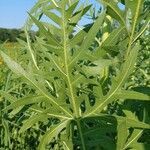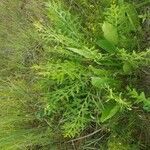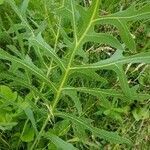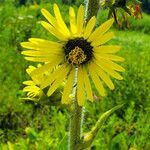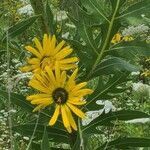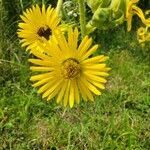Coarse, taprooted, rough-hairy, 1–3 m; lvs alternate, deeply pinnatifid or bipinnatifid, the lower very large, to 5 dm, progressively reduced upwards, the uppermost entire and well under 1 dm; heads in a narrow, sometimes racemiform infl, large, the disk 2–3 cm wide; invol 2–4 cm, exceeding the disk, its bracts ovate, acuminate, squarrose, not much imbricate; rays (13–)17–25(–34), 2–5 cm; 2n=14. Prairies; O. to Minn. and S.D., s. to Ala. and Tex.; locally intr. e. along railroads to N.Y. July–Sept. The basal lvs tend to align themselves in a north-south direction.
A daisy family plant. It grows 1.5-3 m high and spreads 0.9-1.2 m wide. It is strongly erect and hairy. The leaves are feather like and 10-40 cm long. They align north/south. The flowers are bright yellow and in clusters. The flower heads are 5 cm wide.
